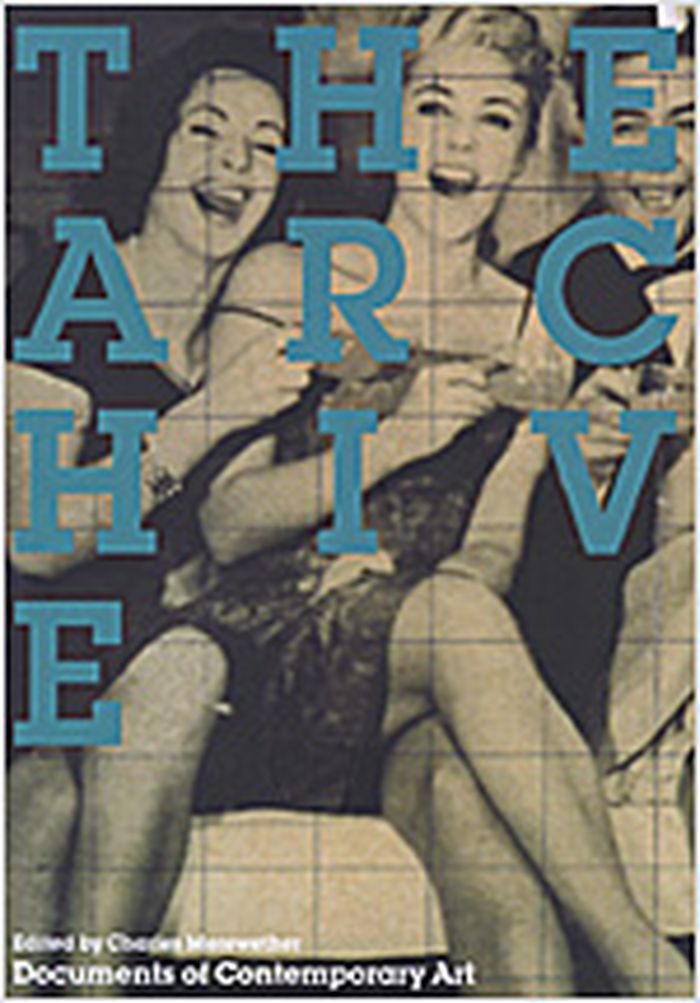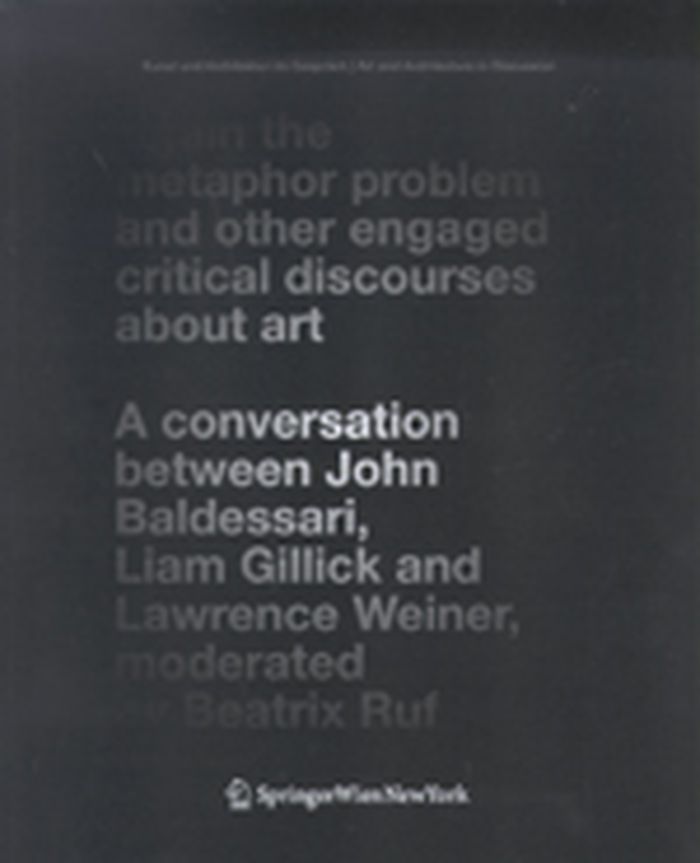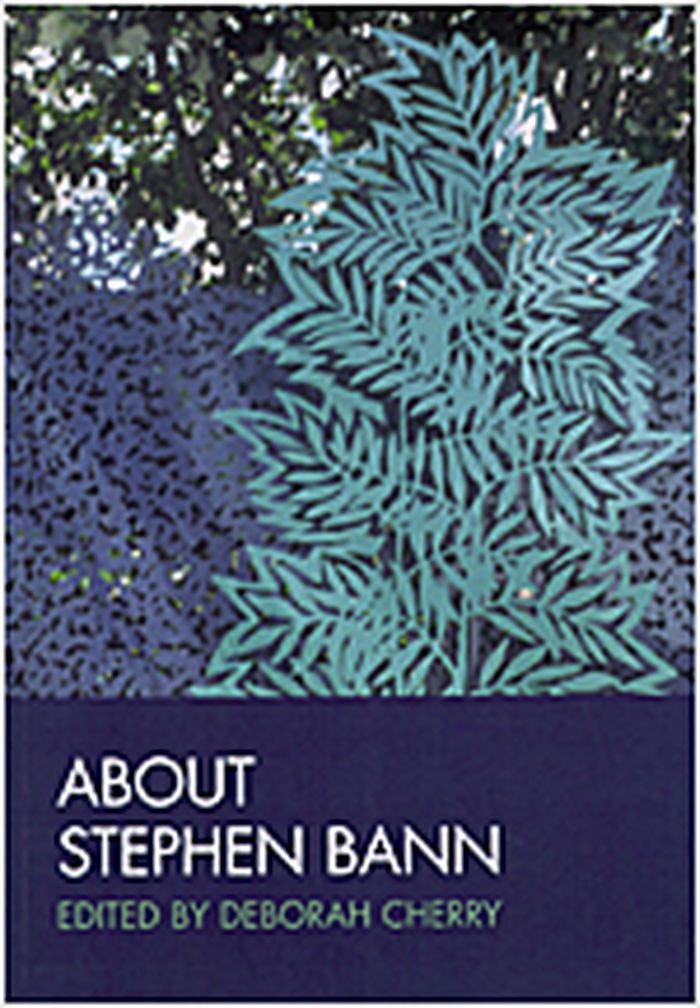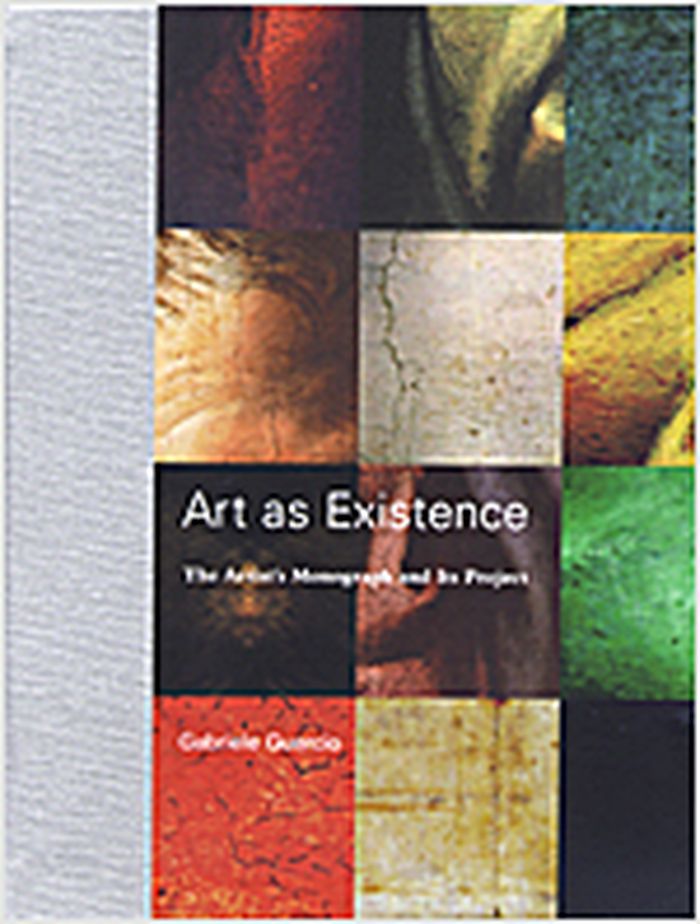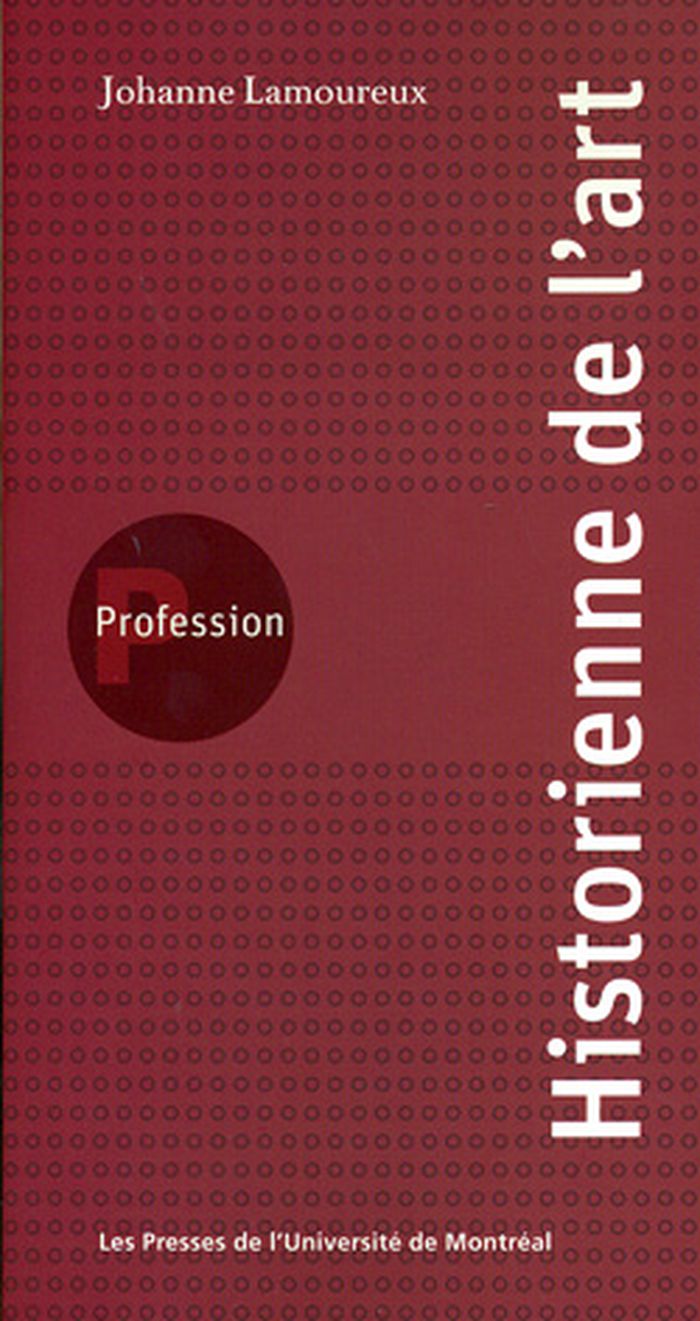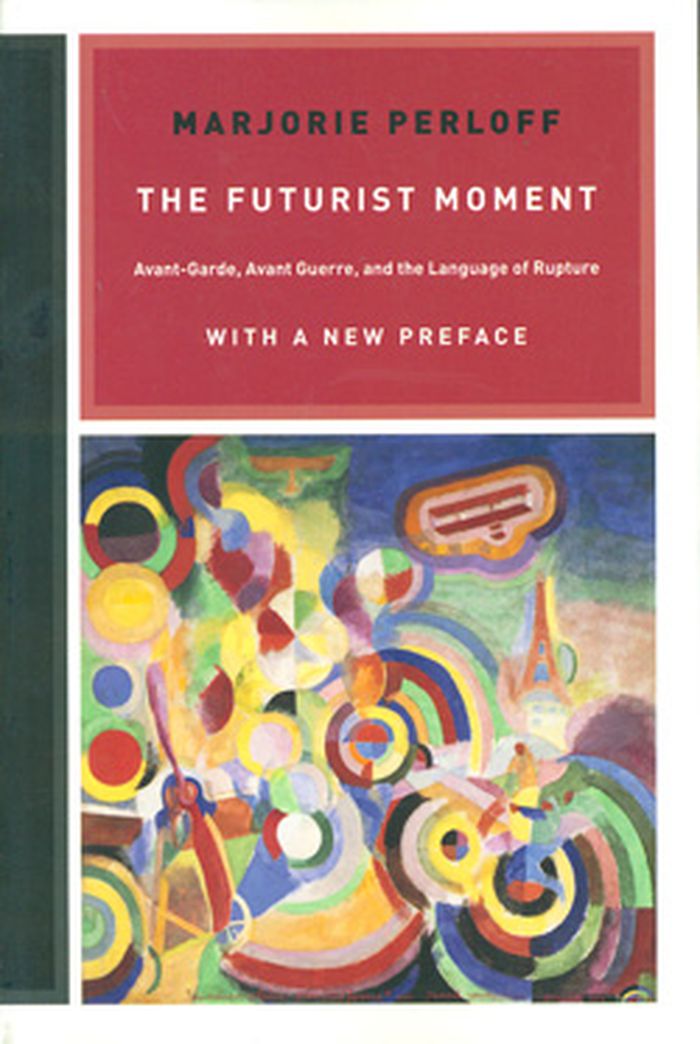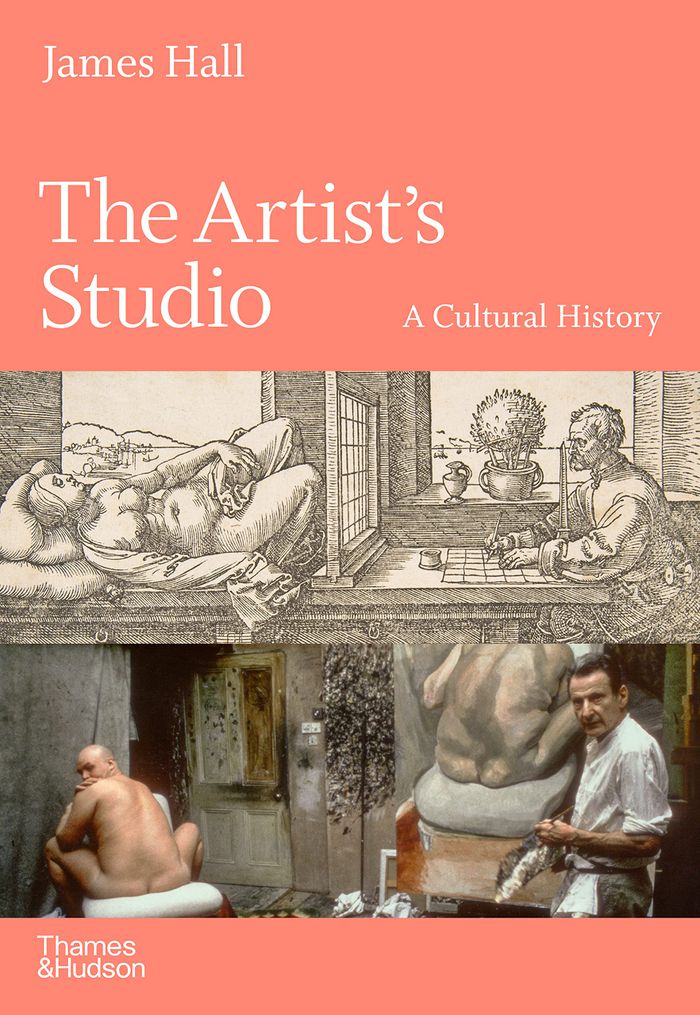books
$40.95
(available to order)
Summary:
A collection of essays by art historians, anthropologists and commentators on contemporary visual culture on the theme of "Location". This publication explores the theme of "Location", including transatlantic exchanges and global connections, and the nature of hospitality that arises in acknowledging migration and diaspora. It also questions how important location is(...)
Art Theory
April 2007, Malden, Oxford, Victoria
Location
Actions:
Price:
$40.95
(available to order)
Summary:
A collection of essays by art historians, anthropologists and commentators on contemporary visual culture on the theme of "Location". This publication explores the theme of "Location", including transatlantic exchanges and global connections, and the nature of hospitality that arises in acknowledging migration and diaspora. It also questions how important location is in producing, understanding and curating art. The contributors consider such topics as site-specificity, examinations of the trans-national/trans-cultural, how images/visual forms migrate, and the repositioning of ownership.
books
April 2007, Malden, Oxford, Victoria
Art Theory
$30.00
(available to order)
Summary:
In the modern era, the archive--official or personal--has become the most significant means by which historical knowledge and memory are collected, stored, and recovered. The archive has thus emerged as a key site of inquiry in such fields as anthropology, critical theory, history, and, especially, recent art. Traces and testimonies of such events as World War II and(...)
November 2006, London / Cambridge
The archive: Documents of contemporary art
Actions:
Price:
$30.00
(available to order)
Summary:
In the modern era, the archive--official or personal--has become the most significant means by which historical knowledge and memory are collected, stored, and recovered. The archive has thus emerged as a key site of inquiry in such fields as anthropology, critical theory, history, and, especially, recent art. Traces and testimonies of such events as World War II and ensuing conflicts, the emergence of the postcolonial era, and the fall of communism have each provoked a reconsideration of the authority given the archive--no longer viewed as a neutral, transparent site of record but as a contested subject and medium in itself. This volume surveys the full diversity of our transformed theoretical and critical notions of the archive--as idea and as physical presence--from Freud's "mystic writing pad" to Derrida's "archive fever"; from Christian Boltanski's first autobiographical explorations of archival material in the 1960s to the practice of artists as various as Susan Hiller, Ilya Kabakov, Thomas Hirshhorn, Renée Green, and The Atlas Group in the present.
$27.95
(available to order)
Summary:
The use of the metaphor has from time immemorial been a central practice of art, and it represents an important issue for all three artists here, who work with language, film and installations. Their discussion leads to a new perception of the metaphor and the function for art and architecture, of the role and interests of artists and mediators of art. A discussion(...)
Again the metaphor problem and other engaged critical discouses about art : a conversation between John Baldessari, Liam Gillick and Lawrence Weiner, moderated by Beatrix Ruf
Actions:
Price:
$27.95
(available to order)
Summary:
The use of the metaphor has from time immemorial been a central practice of art, and it represents an important issue for all three artists here, who work with language, film and installations. Their discussion leads to a new perception of the metaphor and the function for art and architecture, of the role and interests of artists and mediators of art. A discussion about the world of art and art in the world.
Art Theory
About Stephan Bann
$37.50
(available to order)
Summary:
A distinguished group of eminent contributors reflect on the writings of Stephen Bann and his influence on the fields of visual studies, art history and cultural history. Engages with a wide range of subjects from French art and architecture to histories of the garden and painting in China. Includes a portfolio of Bann's poem prints.
About Stephan Bann
Actions:
Price:
$37.50
(available to order)
Summary:
A distinguished group of eminent contributors reflect on the writings of Stephen Bann and his influence on the fields of visual studies, art history and cultural history. Engages with a wide range of subjects from French art and architecture to histories of the garden and painting in China. Includes a portfolio of Bann's poem prints.
Art Theory
$62.50
(available to order)
Summary:
The narrative of the artist's life and work is one of the oldest models in the Western literature of the visual arts. In "Art as existence", Gabriele Guercio investigates the metamorphosis of the artist's monograph, tracing its formal and conceptual trajectories from Vasari's sixteenth-century "Lives of the painters, sculptors, and architects" (which provided the model(...)
Art as existence : the artist's monograph and its project
Actions:
Price:
$62.50
(available to order)
Summary:
The narrative of the artist's life and work is one of the oldest models in the Western literature of the visual arts. In "Art as existence", Gabriele Guercio investigates the metamorphosis of the artist's monograph, tracing its formal and conceptual trajectories from Vasari's sixteenth-century "Lives of the painters, sculptors, and architects" (which provided the model and source for the genre) through its apogee in the nineteenth century and decline in the twentieth. He looks at the legacy of the life-and-work model and considers its prospects in an intellectual universe of deconstructionism, psychoanalysis, feminism, and postcolonialism. Since Vasari, the monograph has been notable for its fluidity and variety; it can be scrupulous and exact, probing and revelatory, poetic and imaginative, or any combination of these. In the nineteenth century, the monograph combined art-historical, biographical, and critical methods, and even added elements of fiction. Guercio explores some significant books that illustrate key phases in the model's evolution, including works by Gustav Friedrich Waagen, A. C. Quatremère de Quincy, Johann David Passavant, Bernard Berenson, and others. The hidden project of the artist's monograph, Guercio claims, comes from a utopian impulse; by commuting biography into art and art into biography, the life-and-work model equates art and existence, construing otherwise distinct works of an artist as chapters of a life story. Guercio calls for a contemporary reconsideration of the life-and-work model, arguing that the ultimate legacy of the artist's monograph does not lie in its established modes of writing but in its greater project and in the intimate portrait that we gain of the nature of creativity.
Art Theory
books
$34.99
(available to order)
Summary:
How does architecture relate to 17th century Dutch painting? Architects Ricardo Flores and Eva Prats analyze the painting of Pieter De Hooch to discover housing design trends of the time, a period which marks when everyday life started to be represented in art. This was the starting point for an architecture workshop at the University of New South Wales in Sydney,(...)
Through the canvas:architecture inside Dutch paintings
Actions:
Price:
$34.99
(available to order)
Summary:
How does architecture relate to 17th century Dutch painting? Architects Ricardo Flores and Eva Prats analyze the painting of Pieter De Hooch to discover housing design trends of the time, a period which marks when everyday life started to be represented in art. This was the starting point for an architecture workshop at the University of New South Wales in Sydney, proposing new architectural designs through examining De Hooch's art.
books
January 2009
Art Theory
$9.95
(available to order)
Summary:
Quel est le rôle, dans la Cité, des chercheurs, des intellectuels, des professeurs, des universitaires en général? Qui sont-ils et que font-ils exactement? Quel a été leur parcours intellectuel? La collection «Profession» répond à ces questions. Johanne Lamoureux est professeure titulaire au Département d'histoire de l'art et d'études cinématographiques de l'Université(...)
Profession historienne de l'art
Actions:
Price:
$9.95
(available to order)
Summary:
Quel est le rôle, dans la Cité, des chercheurs, des intellectuels, des professeurs, des universitaires en général? Qui sont-ils et que font-ils exactement? Quel a été leur parcours intellectuel? La collection «Profession» répond à ces questions. Johanne Lamoureux est professeure titulaire au Département d'histoire de l'art et d'études cinématographiques de l'Université de Montréal.
Art Theory
$24.95
(available to order)
Summary:
Marjorie Perloff's stunning book was one of the first to offer a serious and far-reaching examination of the momentous flourishing of Futurist aesthetics in the European art and literature of the early twentieth century. Offering penetrating considerations of the prose, visual art, poetry, and carefully crafted manifestos of Futurists from Russia to Italy, Perloff reveals(...)
The futurist moment avant-garde, avant guerre, and the language of rupture
Actions:
Price:
$24.95
(available to order)
Summary:
Marjorie Perloff's stunning book was one of the first to offer a serious and far-reaching examination of the momentous flourishing of Futurist aesthetics in the European art and literature of the early twentieth century. Offering penetrating considerations of the prose, visual art, poetry, and carefully crafted manifestos of Futurists from Russia to Italy, Perloff reveals the Moment's impulses and operations, tracing its echoes through the years to the work of "postmodern" figures like Roland Barthes. This updated edition, with its new preface, reexamines the Futurist Moment in the light of a new century, in which Futurist aesthetics seem to have steadily more to say to the present.
Art Theory
Art works : perform
$45.00
(available to order)
Summary:
This unique exhibition in a book presents some of the most challenging art to address the place and function of performance in the contemporary world. Arranged into themed ‘rooms’, it reflects a wide variety of artistic attitudes and practices. Some artists present collaborators as the living, performing objects of their work, while others turn the audience into the main(...)
Art works : perform
Actions:
Price:
$45.00
(available to order)
Summary:
This unique exhibition in a book presents some of the most challenging art to address the place and function of performance in the contemporary world. Arranged into themed ‘rooms’, it reflects a wide variety of artistic attitudes and practices. Some artists present collaborators as the living, performing objects of their work, while others turn the audience into the main protagonists in the creative process.
Art Theory
$53.95
(available to order)
Summary:
The artist’s workplace has always been an idealized utopia as well as the domain of dirty, backbreaking work. Written descriptions, paintings, prints, and even photographs of the artist’s atelier distort as much as they document. This illuminating cultural history of the artist’s studio charts the myth and reality of the creative space from Ancient Greece to the(...)
The artist's studio: A cultural history
Actions:
Price:
$53.95
(available to order)
Summary:
The artist’s workplace has always been an idealized utopia as well as the domain of dirty, backbreaking work. Written descriptions, paintings, prints, and even photographs of the artist’s atelier distort as much as they document. This illuminating cultural history of the artist’s studio charts the myth and reality of the creative space from Ancient Greece to the present. Tracing a history that extends far beyond the bohemian, romantic, and renaissance cults of the artist, each chapter focuses on key developments of the studio space as seen in a variety of familiar and unfamiliar images. Mythical and divine makers and some amateurs are included, alongside craftspeople— potters, illuminators, weavers, embroiderers, and architects— along with artists such as Artemisia Gentileschi, Claude Monet, Michelangelo, Rosa Bonheur, and Diego Rivera. Each carefully chosen example places the studio within a cultural and political context, with the aim of correcting the historical imbalance that has distorted the picture by leaving out the many artisans who collaborated with artists. Leading authority James Hall also extends the discussion to the artist’s museum and the artist’s house, as well as the development of portable studios, with sections on ''plein air'' painting and drawing in the East.
Art Theory
